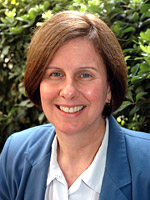Degrees
BSc - 1973
Australian National University
PhD Human Population Genetics - 1976
Australian National University
Bio
Dr. Bronya Keats is Professor & Chair Emeritus of the LSUHSC Department of Genetics, and Professor of Biomedical Science & Biochemistry in the Research School of Biology at the Australian National University. She received her Ph.D. in Human Genetics from ANU in 1976, and spent several postdoctoral years at the University of Hawaii before accepting a faculty position at LSUHSC in 1982. From 2000-2008 she was Professor & Chair of the LSUHSC Department of Genetics and Director of the Molecular & Human Genetics Center of Excellence. Dr. Keats has served on numerous NIH Study Sections and Working Groups; in particular, she was a member of the National Deafness and other Communication Disorders Advisory Council (1995-1999), and the National Advisory Council for Human Genome Research (2000-2005). Additionally, she was President of the Association of Professors of Human and Medical Genetics in 2005-2006.
Research Interests
Therapeutics for Friedreich ataxia Model systems for Acadian Usher syndrome Genetics of Deafness
Teaching Activities
Population Genetics
Genetic Epidemiology
Selected Publications
X. Cheng, L. Li, S. Brashears, T. Morlet, S-S. Ng, C.I. Berlin, L.J. Hood, B.J.B. Keats. Connexin 26 variants and Auditory Neuropathy/Dys-synchrony among children in schools for the Deaf. Am. J. Med. Genet. 139A:13-18 (2005).
B.J.B. Keats, C.I. Berlin, P. Gregory. Epidemiology of Genetic Hearing Loss. Seminars in Hearing 27:136-147 (2006).
J.J. Lentz, F. Pan, S. Ng, P. Deininger, B.J.B. Keats. Ush1c216A knock-in mouse survives Katrina. Mutation Research 616:139-144 (2007).
B.J.B. Keats. Genetic Hearing Loss. In The Senses: A Comprehensive Reference, Vol 3, Audition (eds. P. Dallos, D. Oertel). Elsevier, San Diego (2008).
J.J. Lentz, W.C. Gordon, H.E. Farris, G.H. MacDonald, D.E. Cunningham, C.A. Robbins, B.L. Tempel, N.G. Bazan, E.W Rubel, E.C. Oesterle, B.J.B. Keats. Deafness and retinal degeneration in a novel USH1C knock-in mouse model. Developmental Neurobiology 70:253-267 (2010).

 myLSUHSC
myLSUHSC